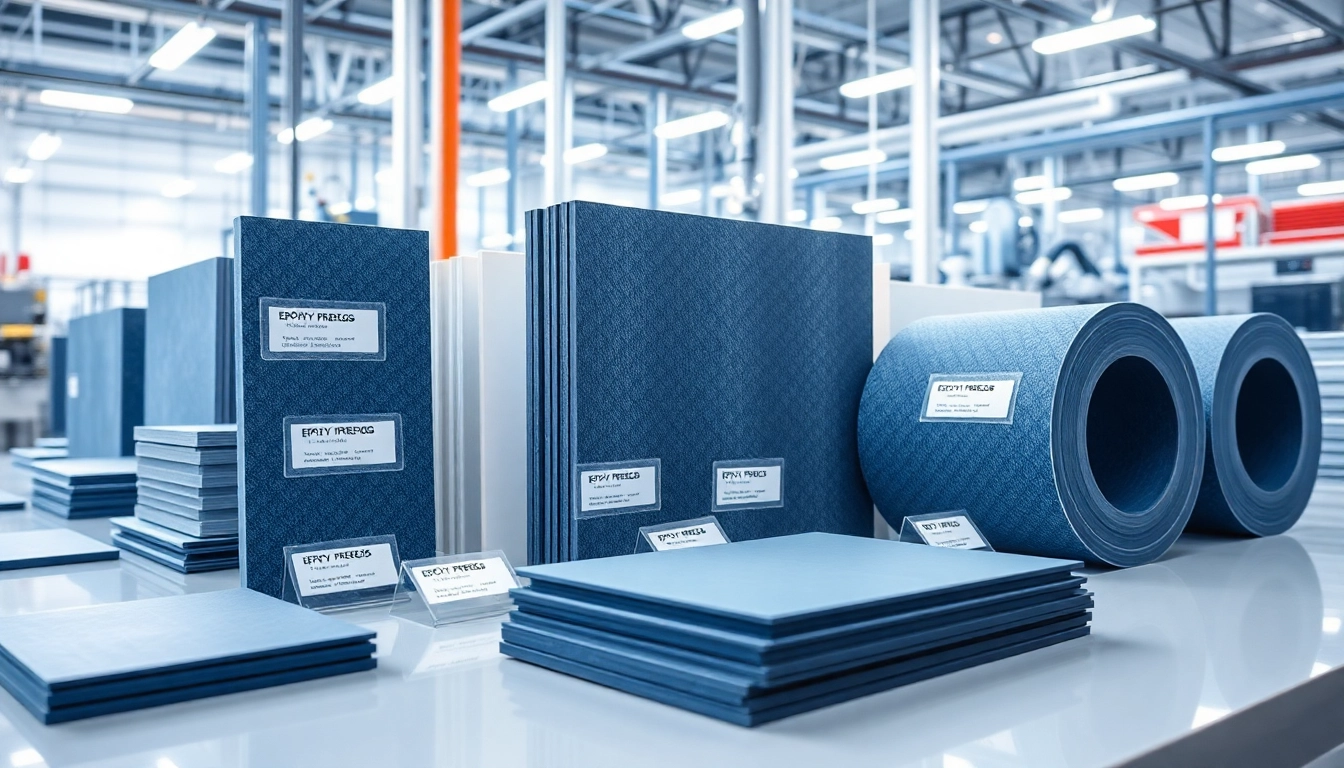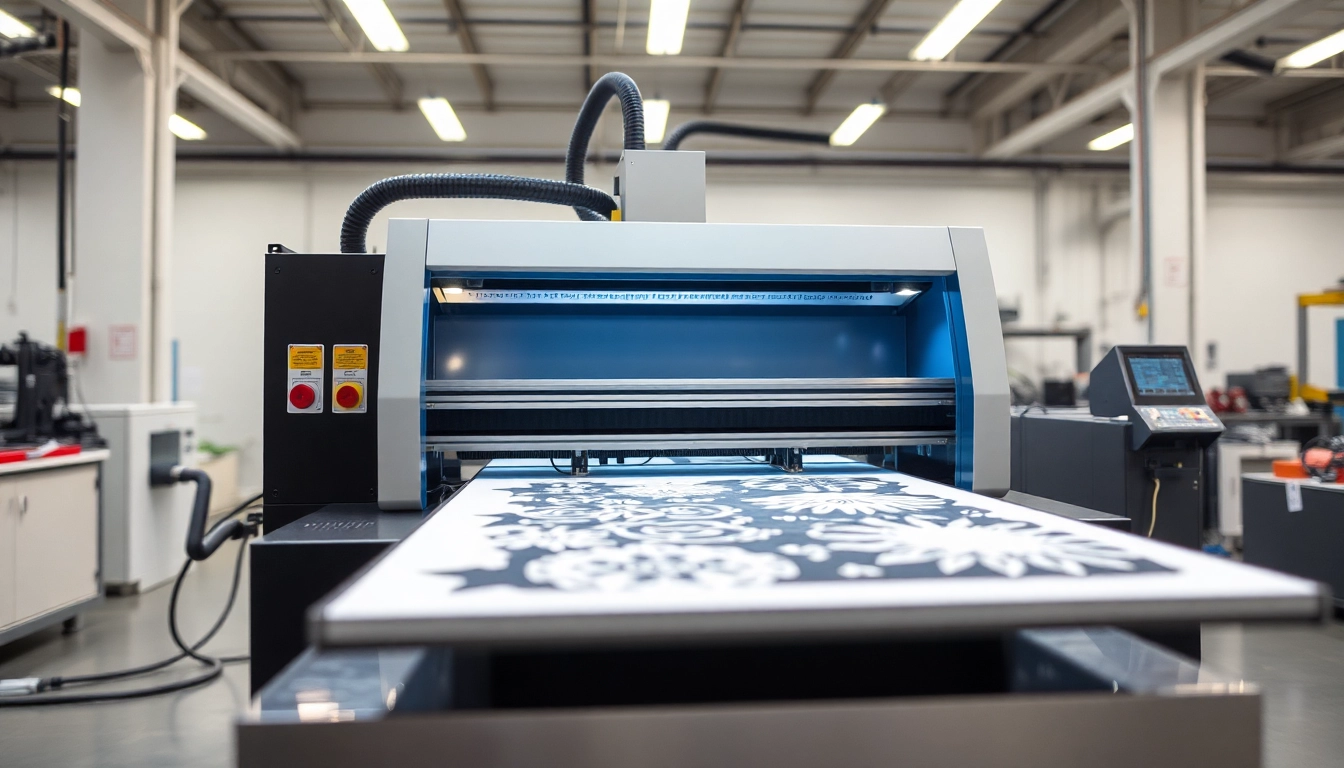Introduction to Epoxy Prepregs
In an era where advanced manufacturing processes are pivotal in various sectors, the technology behind materials is as crucial as ever. One such innovation that has gained traction is epoxy prepregs. These composite materials find applications across industries, owing to their unique properties that enhance performance while streamlining manufacturing processes.
What are Epoxy Prepregs?
Epoxy prepregs consist of reinforcing fibers that are pre-impregnated with an epoxy resin system. This unique composite structure combines the advantages of both resin and fiber materials, yielding components that offer superior strength, durability, and weight reduction characteristics. The resin is partially cured, providing a pliable state that allows for easy handling and shaping before full curing occurs at elevated temperatures.
Historical Context and Development
The advent of epoxy prepregs can be traced back to significant advancements in polymer chemistry and composite fabrication techniques during the latter half of the 20th century. Originally developed for aerospace applications, the capability of epoxy prepregs to withstand extreme conditions has prompted their expanded use in automotive, marine, and sporting sectors. Ongoing research continues to innovate the resin formulations and fiber types, enhancing their properties for specific applications.
Applications of Epoxy Prepregs
Today, epoxy prepregs are utilized in high-performance applications requiring lightweight and strong materials. Industries such as aerospace rely on these materials for components like wing structures and fuselage parts, while their application in automotive manufacturing has led to the development of lighter, more fuel-efficient vehicles. Additionally, the sports equipment sector benefits from epoxy prepregs through the production of high-performance bicycles, surfboards, and other gear that requires both rigidity and resilience.
Properties and Benefits of Epoxy Prepregs
Mechanical Properties and Performance
Epoxy prepregs exhibit exceptional mechanical properties, including high tensile strength, modulus, and impact resistance. These characteristics stem from the combination of epoxy resins with reinforcing fibers such as carbon or glass. The resulting composites can withstand rigorous stress while maintaining dimensional integrity under varying environmental conditions. When subjected to performance tests, these materials often exceed traditional composites, affirming their reliability in demanding situations.
Advantages Over Traditional Composite Materials
One of the primary advantages of epoxy prepregs over traditional composite materials lies in their processing capabilities. By incorporating a pre-impregnated state, manufacturers benefit from better control over resin distribution and fiber orientation, leading to uniform properties throughout the composite. This method reduces waste and ensures consistent performance, unlike traditional hand layup techniques. Furthermore, the controlled curing process limits outgassing and volatiles, enhancing the final product’s quality and performance.
Impact on Manufacturing Efficiency
The use of epoxy prepregs can significantly enhance manufacturing efficiency. Their ready-to-use nature minimizes labor intensity and time spent on setup, allowing for quicker production cycles. Additionally, due to their compatibility with automated manufacturing techniques—such as automated fiber placement (AFP)—epoxy prepregs can optimize production workflows. This integration results in lower production costs and faster time-to-market for critical components.
Common Applications of Epoxy Prepregs
Aerospace Industry
The aerospace sector is at the forefront of utilizing epoxy prepregs due to stringent regulations and the necessity for lightweight, strong materials. Components such as wing skins, fuselage sections, and internal structures benefit from the superior mechanical properties of epoxy prepregs, which contribute to increased fuel efficiency and overall performance. As the demand for advanced aerospace materials continues to rise, so does the reliance on these innovative prepregs.
Automotive Manufacturing
As the automotive industry strives for lighter vehicles to enhance fuel efficiency while maintaining safety standards, epoxy prepregs have emerged as a solution. Applications range from body panels to intricate chassis components, where their strength-to-weight ratio allows automotive manufacturers to develop vehicles with reduced emissions without compromising structural integrity. Recent innovations have led to the integration of epoxy prepregs in electric vehicles for weight reduction and improved energy efficiency.
Sports Equipment Production
Epoxy prepregs play a vital role in the production of high-performance sporting equipment. From bicycles to tennis rackets, these materials allow for manufacturing lightweight, durable products that enhance athlete performance. The ability to mold and shape epoxy prepregs into complex geometries further facilitates customization in athletic equipment design, enabling tailored solutions that meet specific needs.
Manufacturing Process of Epoxy Prepregs
Materials Required
Producing epoxy prepregs necessitates specific raw materials, comprising reinforcing fibers (commonly carbon or glass), epoxy resin formulations, and various hardeners. Each component plays a crucial role in defining the properties of the final product. The choice of fiber type, resin system, and curing agents must align with the desired performance specifications to ensure optimal results in the finished composite.
Step-by-Step Production Process
The manufacturing process of epoxy prepregs generally follows these steps:
- Material Preparation: Reinforcing fibers are cleaned and measured according to specifications.
- Resin Mixing: Epoxy resin is mixed with hardeners and additives to achieve the desired curing characteristics.
- Impregnation: The resin mixture is applied to the reinforcing fibers by methods such as hot melt or solvent dip to achieve uniform distribution.
- Curing: The prepreg is partially cured under controlled temperature and pressure, allowing for optimal handling during manufacturing.
- Cutting and Roll-Up: Once cooled, the prepreg is cut into sheets or rolled for storage and shipping.
Quality Control Measures
Maintaining quality in the production of epoxy prepregs is paramount. Regular inspections should be conducted throughout the manufacturing process, including testing the physical properties of the raw materials and assessing the impregnation quality. Moreover, non-destructive testing methods are often employed on finished prepregs to detect any defects, ensuring that only the highest quality materials proceed to the application stages.
Future Trends and Innovations in Epoxy Prepregs
Research and Development in Epoxy Formulations
As industries continue to evolve, the demand for enhanced performance characteristics in epoxy prepregs leads to ongoing research and development efforts. Innovations in resin formulations aim to improve curing times, thermal stability, and even optimize the environmental impact of the manufacturing process. Developments such as bio-based resins and advanced curing agents are emerging, signaling an era of sustainable practices in the prepreg sector.
Sustainable Practices in Prepreg Manufacturing
Sustainability is increasingly central to manufacturing processes, and epoxy prepregs are no exception. The exploration of eco-friendly materials and production methods aims to lessen the carbon footprint associated with traditional composite manufacturing. Initiatives include developing recyclable prepreg materials that can maintain performance while reducing waste in the manufacturing cycle.
Market Predictions and Growth Opportunities
The epoxy prepregs market is poised for substantial growth in the coming years, driven by increased demand across sectors for lightweight and high-strength materials. The expansion of electric vehicles, along with the relentless pursuit of efficiency in aerospace, positions epoxy prepregs as a core technology. Emerging markets and advancements in manufacturing technology create lucrative opportunities for innovation and collaboration in the field.


